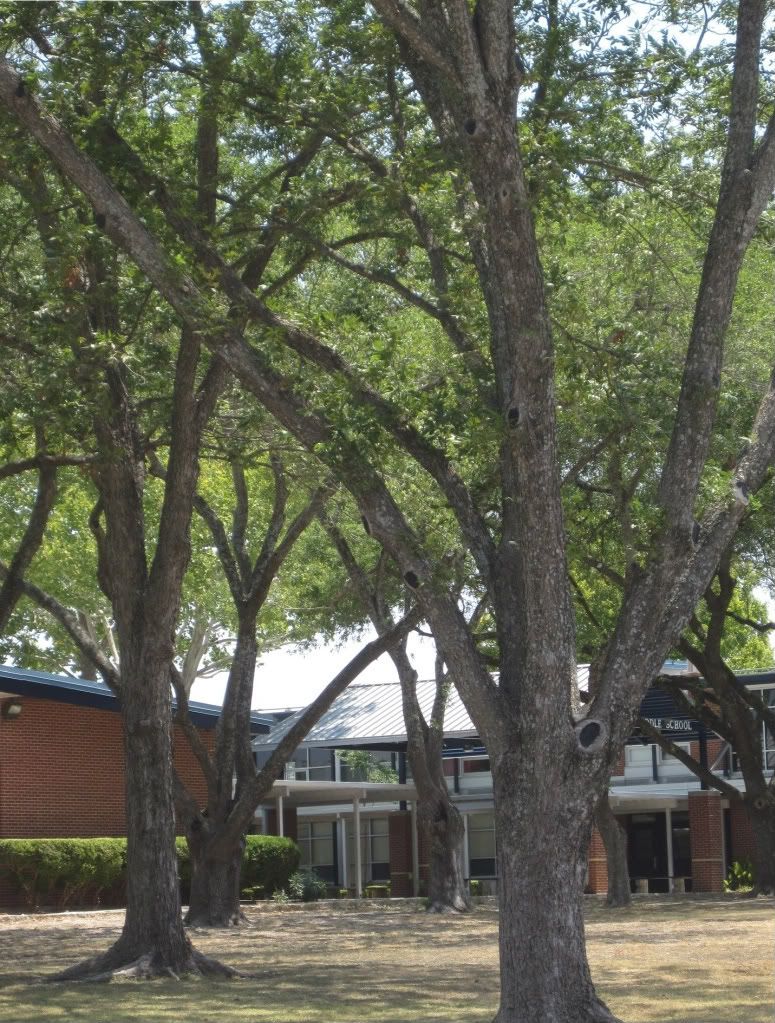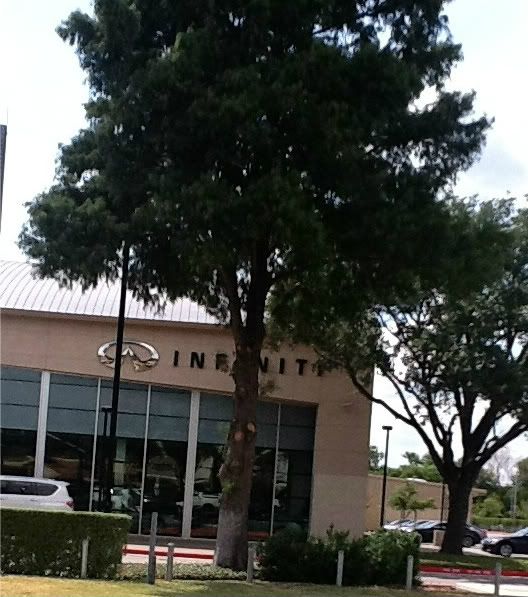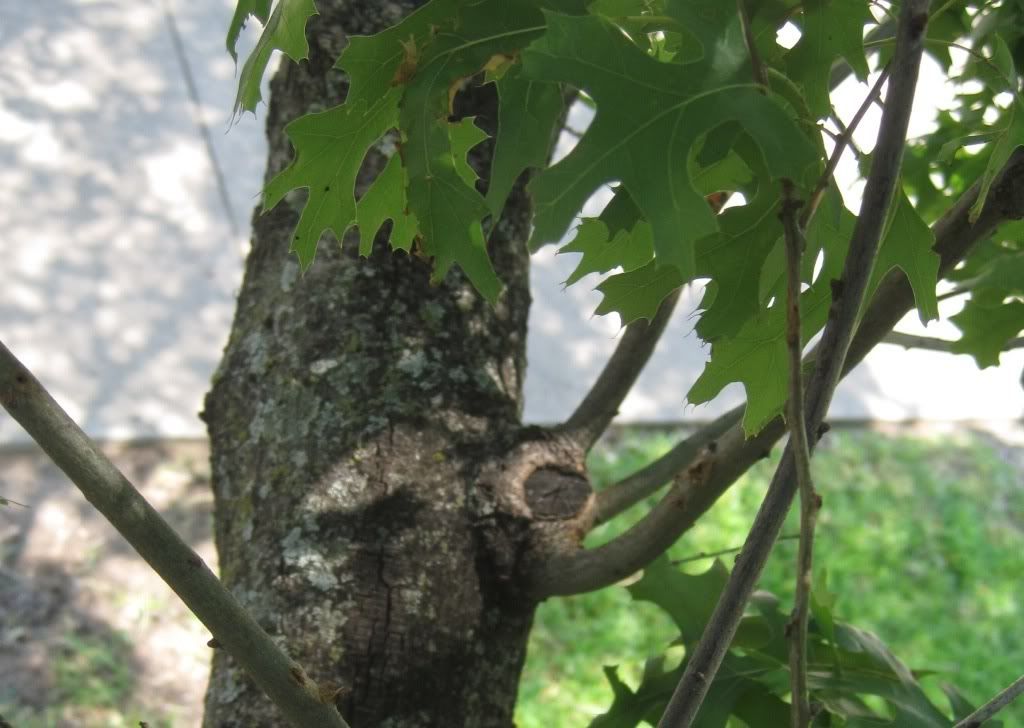 |
| People often ask to have the "suckers" removed from trees. |
 |
| Looks good to some, but weakens trees. |
 | ||
| Multiple wounds and potential for sun scald |
Every branch supports its parent. New branching occurs when a latent bud on the surface of a branch is stimulated by sunlight. In the upper canopy, this means the highest tips keep reaching higher, while the widest tips keep reaching wider, and the older parts of branches keep getting thicker.
So, imagine a large tree trunk, and a few feet up a really large branch comes off the side. The stem is thicker below that branch than above it, creating taper. So, a tree that has been excessively "elevated" all its life is roughly the same diameter where it originates as it has where the branching begins. A tree that has had more low branches retained may not be as tall, but it will be stouter and stronger.
Similarly, a branch in a full canopy has developed a distinct taper along its length, which makes it much stronger. This is why slowing a tree's vertical growth by diffusing its energy throughout many small branches can actually benefit the tree greatly over the long term.
 |
| This Oak was sunburned badly. |
But, if a dramatic change occurs to suddenly put more light on the trunk (such as a storm break or removal of an adjacent tree), you get a quick flush of interior sprouts. Without the sprouts, the bark of the tree can be damaged by the sudden increase in sunlight, just as people sunburn. Sun scald can kill a section of bark, which is the tree's best defense against disease and insects. It might not even be very noticeable to the casual observer, but this damage can become a weak point where the branch will break someday. Further, since now all the active buds are at the tips, the branches get longer and longer without significant taper; this puts more strain over the length of the limb (the way a dumbbell tires us out more at arm's length than it does when held close to the body).
“Thinning” the canopy, a practice commonly promoted by some companies, isolates branches, which are ill-equipped to resist damage by themselves. A dense canopy parts the wind like a building, allowing branches to support each other. Add to that, a branch with all its weight at the end whips around more violently;
 |
| These "clean" trees are more likely to break in the wind. |
 |
| Sprouts grow soon after drastic changes in sun. |
When faced with all these facts, it's a rare client that still insists on the strip-em-out annual program. Still, leaving interior sprouts is sometimes unattractive. I think it's okay to let the trees be ugly for awhile, but not everyone agrees.
For those who insist on improving the appearance of a particularly crowded tree, it is completely acceptable to thin out the sprouts to a few strong-looking, well spaced branches. In highly structured gardens, it might even be helpful to “clean” a short section of the largest limbs near each major branch union. The select few remaining branches, with any luck, will develop more quickly than the individual members of the cluster; they are likely to provide just as much shade as the whole group would have done.
By highlighting the tree's structure in this way, a talented arborist can keep the majority of the interior growth while distracting the eye from the shaggy sprouts that are helping the tree recover from a significant, stressful event (or events). A healthy tree will either develop some of the remaining sprouts into permanent branches, or higher branches will shade them out. Over time, the ugly clusters of sprouts will naturally fade away. Clients are happy and trees recover. Sprouts become a non-issue.
But some companies continue to promote the practice of removing “suckers,” while others will readily comply with a client's request to do so without informing them of the consequences. An uneducated consumer might end up with severely damaged trees despite the effort and expense of hiring a “professional.” And so, sadly, it turns out the real “suckers” are the people who get burned by these unethical and/or ignorant companies.
Protect your trees from unnecessary damage; whenever you interview potential arborists about the work on your trees, be sure to insist that interior live branches will not be removed unless absolutely necessary. If you have the time, ask for references and look at the company's previous work to make sure they understand what you are talking about. If more consumers do these things, the companies that prey on suckers might be forced to learn proper tree care.
























